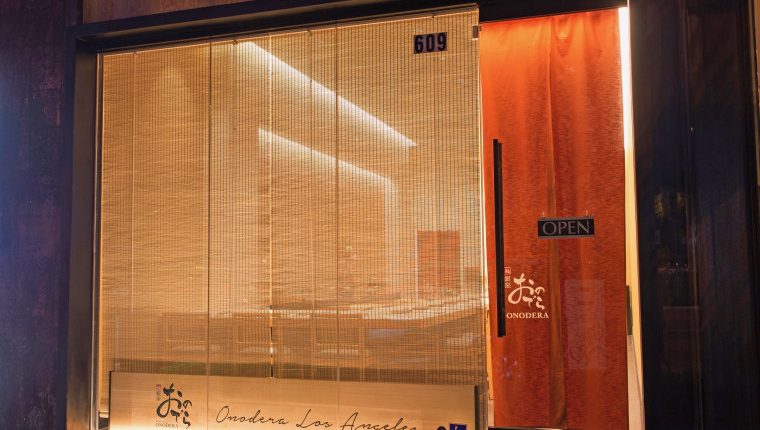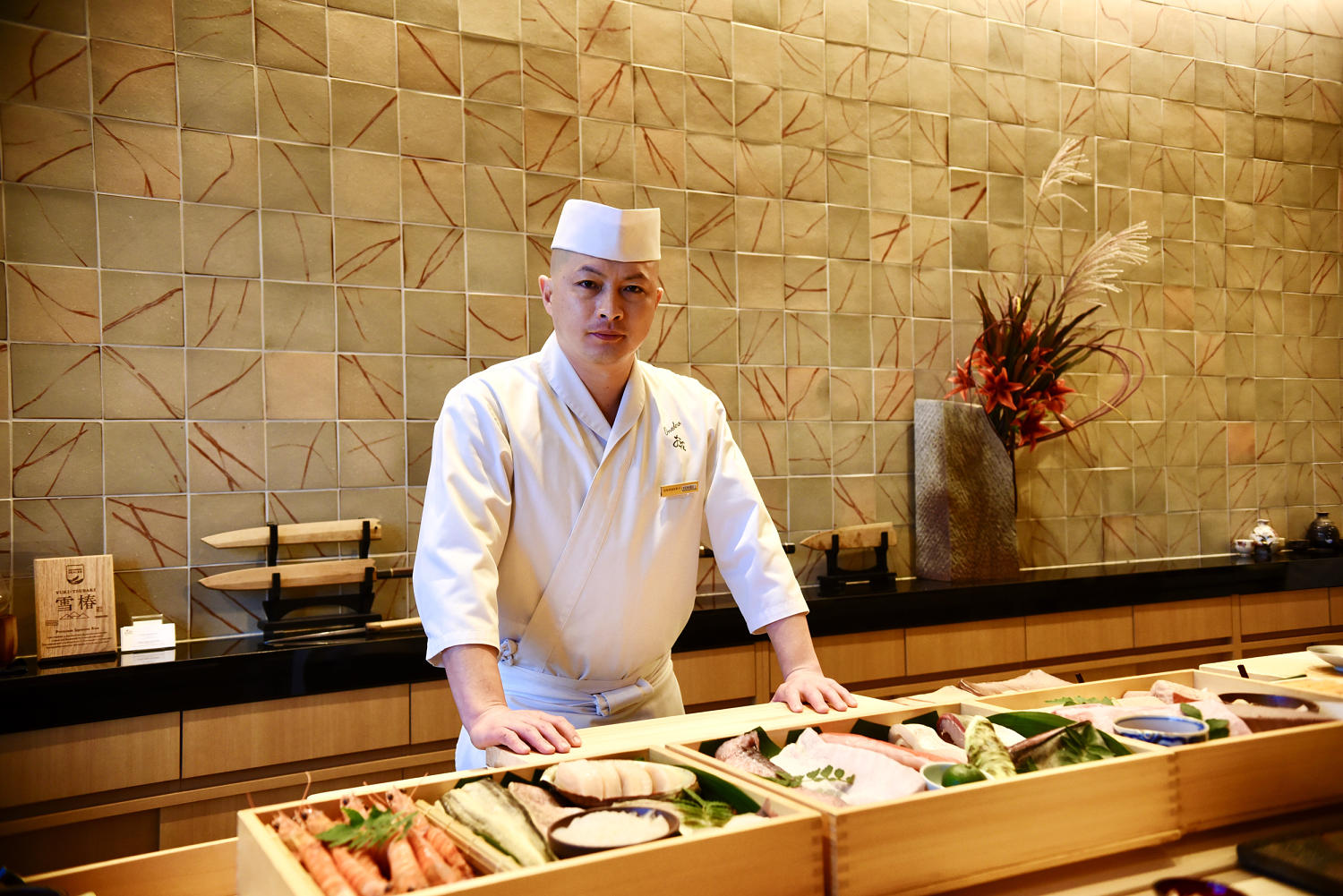Directly translated as “I’ll leave it up to you,” omakase offers an intimate, rarefied dining experience in which the chef chooses, sometimes at the spur of the moment, what gets served depending on available ingredients or the day’s catch. In lieu of a fixed menu, the customer entrusts the chef to do the ordering. Omakase is the preferred way of service for esteemed sushi masters, though it’s not limited to sushi.
The L.A. branch of the Tokyo-based Sushi Ginza Onodera, which has two Michelin stars, imports high-quality seafood from Tokyo’s Toyosu Market and rice from the Niigata prefecture. The restaurant’s 23-course omakase meal — featuring immaculate slices of bluefin tuna, golden eye snapper and Hokkaido scallop layered atop cubes of vinegar-infused rice — is priced at $400 per head.
“I aim to let you experience Japan’s four seasons and savor various regional fish as if you were traveling through Japan,” executive chef Yohei Matsuki wrote in an email.
Matsuki, who trained for years at the restaurant’s Tokyo outpost, said he’s committed to using only Japan-sourced ingredients because “the quality control and handling of fish” by people in Japan’s fishing industry “are among the best in the world.”
Like many other modern sushi masters, Matsuki said he deploys late 19th-century Edomae-style techniques, such as marinating ingredients in soy sauce and curing them in salt or kombu sea kelp — a process that could last a few hours to several days.
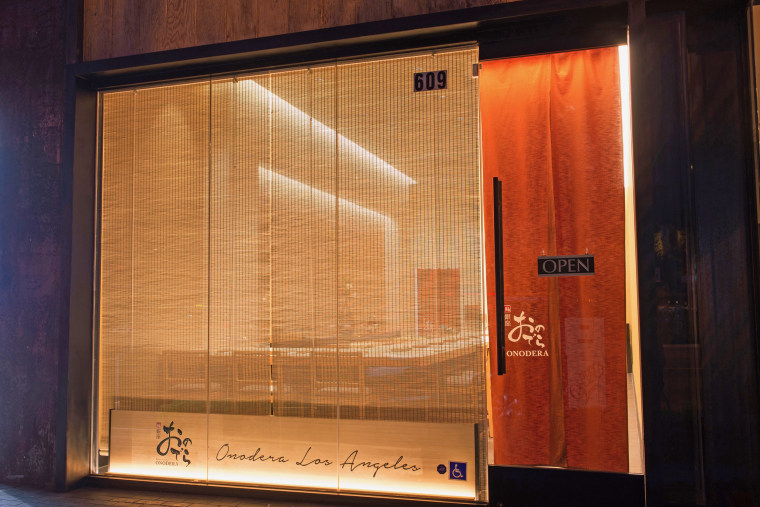
Matsuki said he’s pleased that traditional Japanese cuisine has garnered greater critical appreciation in recent years. “I hope this will increase awareness of Japanese culture among people from around the world,” he said.
Experts say the omakase boom took off in L.A. — because the city’s historic Little Tokyo enclave, founded in the late 19th century, was once the largest Japanese community in the country. It has long served as the country’s epicenter of Japanese food, offering an extravaganza of craft ramen and late-night yakitori bars.
Sushi, in particular, has a storied history in L.A., said Samuel Yamashita, a food historian who has studied the evolution of Japanese cuisine in North America. Kawafuku, a beloved local institution in Little Tokyo, opened the country’s first sushi bar in 1966. A few years later, chef Ichiro Mashita at the nearby Tokyo Kaikan invented the now ubiquitous California roll.
“Sushi places in Japan in the ‘70s, ‘80s and ‘90s were very macho,” Yamashita said. If you don’t eat the sushi right away the chefs would get pissed off. Things have really changed.”
The high-end sushi craze didn’t take off until the 2000s, Yamashita said. By tracking spots in phone books, Yamashita found that the number of sushi restaurants listed in the city jumped from nine in 1995 to 115 in 2019. Pop culture played an important role: The 2012 documentary “Jiro Dreams of Sushi,” which profiled a revered Japanese sushi master in lush detail, introduced the esoteric art of sushi making to Westerners.
A towering force behind L.A.’s now formidable omakase scene, Yamashita said, is Masayoshi Takayama, whose flagship New York City restaurant, Masa, became the country’s first three-Michelin-star Japanese restaurant. (It’s also the priciest: Dinners top $1,000 per diner, excluding beverages.) Ginza Sushi-ko, Takayama’s first restaurant in L.A., became a training ground for local sushi chefs in the 1990s. A host of Michelin-star omakase spots in the city, including Sushi Q, Sushi Kaneyoshi and Nozawa Bar, followed what Yamashita called the “Masa effect.”
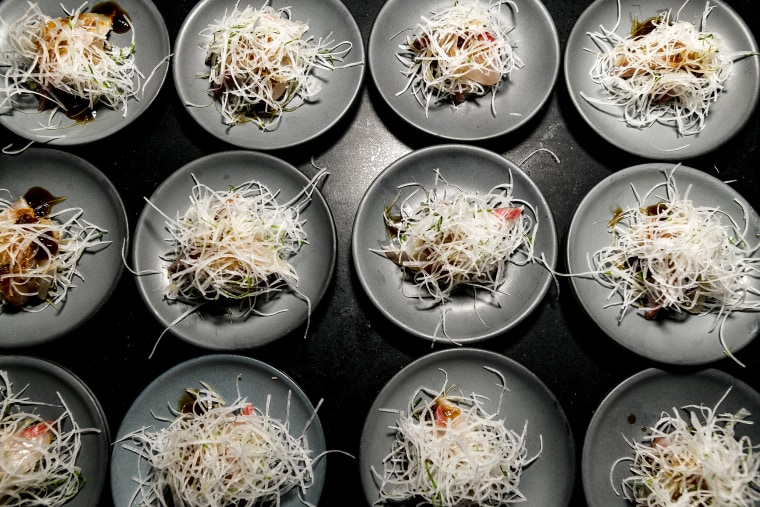
Eric Rath, a professor at the University of Kansas and sushi expert, said nigiri sushi dates back to before the 19th century. There were references to the dish in eighth-century literature, he said. In those early days, sushi was primarily a street food; a piece of sushi was three times the size of today’s offering.
“It was a very inexpensive snack that commoners could have,” Rath said. “One piece of sushi might have been the same price as a bowl of noodles.”
The professionalization of sushi, Rath said, began after World War II with the advent of refrigerators. Sushi restaurants didn’t start offering fixed menus until Japan began Westernizing in the late 1800s, he said.
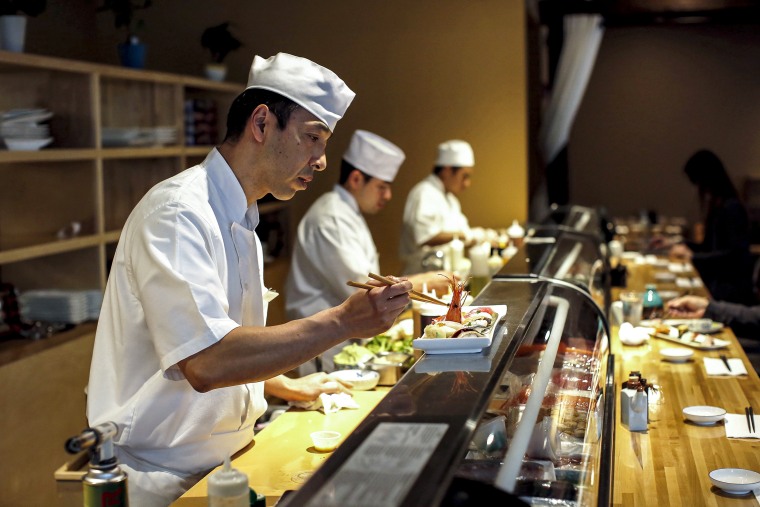
“With refrigeration, people started to refine sushi, and you can serve premium fish like bluefin tuna,” he said. “You had to cook with a certain degree of licensing — there was nothing like that in the past.”
But the U.S. sushi sector will likely reach a saturation point in the next five years, Yamashita said, due in large part to climate change and overfishing. Bluefin tuna populations, for example, have fallen rapidly over the past few decades because of consumer demand for sushi and sashimi.
“A lot of fish won’t be available because of global warming, so sushi will be more expensive than it is now,” Yamashita said. “Because of that, first-rate places will probably only survive in big cities.”
The next chapter for refined Japanese cuisine, Yamashita said, might focus on kaiseki, a traditional multi-course tasting menu that includes sashimi as well as cooked meat and vegetables, rice, a hot pot and dessert. Two of L.A.’s Michelin-star restaurants, Shibumi and n/naka, pay homage to kaiseki.
David Schlosser, the head chef at Shibumi, said he came up with the concept of the restaurant after a trip to Japan in the early 2000s, when he became inspired by the simplicity and elegance of Japanese culinary traditions.
“I had such a deep respect for trying to understand and honor the food that I realized then I didn’t want to do fusion,” he said. “When you can make something classic perfect, why put olive oil, parsley, and tomato peppers? I wanted to keep the culture for the future generation.”
Source: | This article originally belongs to Nbcnews.com
